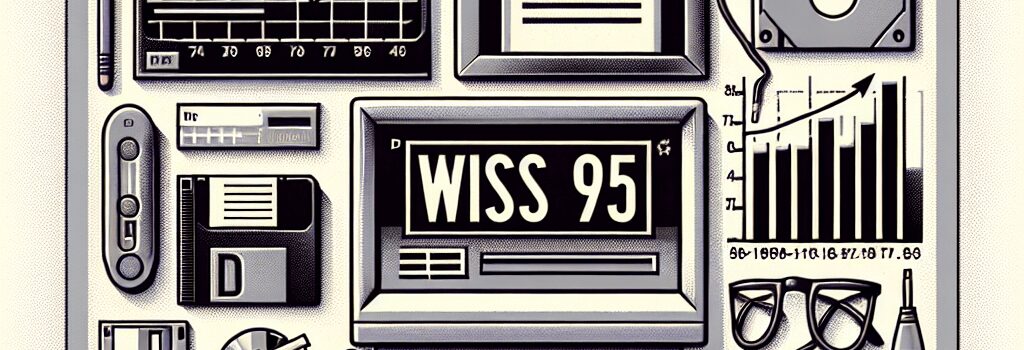Reviving Retro Performance: Benchmarking Windows 95 PCs in a Modern Era

For enthusiasts who still maintain systems from the Clinton administration, there’s exciting news on the horizon. Crystal Dew World, known for popular utilities like CrystalDiskInfo and CrystalDiskMark, has updated its CrystalMark Retro benchmark. The update brings enhanced technical capabilities and expanded support, now accommodating operating systems as far back as Windows 95, Windows 98, and legacy versions of Windows NT such as 3.51 and 4.0. Previously, the app only supported systems down to Windows XP.
Expanding the Benchmarking Horizon
CrystalMark Retro now outputs detailed performance metrics for five critical components:
- Single-Core CPU Performance: Benchmarking the raw, sequential processing power of vintage processors.
- Multi-Core CPU Performance: Evaluating how legacy systems handle parallel computing tasks, despite their limited multi-threading capabilities.
- 2D Graphics Performance: Utilizing GDI to assess the rendering capabilities for common graphical operations in earlier versions of Windows.
- 3D Graphics Performance: Testing 3D rendering using the OpenGL pipeline, shedding light on how older hardware copes with modern graphics demands.
- Disk Performance: Analyzing storage speed by breaking tests into four sub-categories, including sequential and random read/write operations.
Despite its backward compatibility, the app continues to run seamlessly on modern systems, supporting both 64-bit x86 and Arm-based architectures. Users can leverage the online results database to sort benchmarks by operating system—revealing a curated collection of nine results for Windows 95, six for Windows 98, and five for Windows NT 3.51.
Technical Deep Dive: Understanding the Benchmark’s Architecture
The updated benchmark utilizes a mix of low-level system calls and higher level APIs to interface with legacy hardware. The single-core tests directly interact with CPU registers, while the multi-core assessments simulate workloads that historically challenged early dual-processor systems. The graphics tests, on the other hand, are meticulously designed to measure the efficiency of graphic pipelines inherent to GDI and OpenGL implementations, which were at the heart of responsive user interfaces in the pre-Windows XP era.
Furthermore, disk performance tests have been enhanced with a more granular breakdown of storage operations. This includes advanced algorithms to simulate both sequential and random I/O, replicating real-world scenarios such as file copying and database operations. Such technical detail not only provides nostalgia but also serves as a rigorous performance check for enthusiasts rebuilding legacy systems with second-hand components.
Security Considerations for Retro Systems
Retro computing is about preserving history and functionality, but it also comes with inherent security risks. Users reviving old systems should exercise caution. Projects like Windows Update Restored ensure that these systems have all available legacy patches, yet caution against connecting them directly to the internet remains paramount. The lack of modern browser security and patching mechanisms make them vulnerable to contemporary malware, emphasizing that these machines are best enjoyed in an offline or tightly controlled network environment.
The Community Impact and Expert Opinions
Benchmarking is not merely a tool for comparing performance but also serves as a validation mechanism for system builders and collectors. Experts in retro computing emphasize that benchmarks like CrystalMark Retro offer valuable insights into the reliability and performance of older hardware. They also help validate performance expectations when refurbishing vintage systems with aged or hand-me-down parts. The online results database provides a unique historical archive, enabling comparisons across different eras.
Enthusiasts have noted that the continual interest in vintage systems—exemplified by devices like the Pocket386 and Book 8088 laptops—demonstrates a broader trend. This trend bridges the nostalgia for past computing experiences with a technical quest for understanding legacy performance benchmarks. Experts argue that these tools act as digital time capsules, preserving the operational ethos of early computing while allowing modern systems to be benchmarked against classic metrics.
Looking Forward: Legacy Meets Modern Innovation
As modern computing continues to evolve, the juxtaposition of retro benchmarks with current technological advancements presents an intriguing study. The fact that CrystalMark Retro is fully operational on both ancient operating systems and cutting-edge architectures creates a bridge between decades of tech evolution. This dual compatibility encourages hobbyists and professionals alike to explore performance scaling and optimization trends over time. Furthermore, it may foster innovations in emulation technologies and even aid in the development of niche applications that rely on accurate performance measurement of legacy systems.
In summary, while these PCs are well past their commercial lifespans, the persistent enthusiasm within retro computing communities, combined with advancements in benchmarking tools, continues to breathe new life into vintage hardware. Whether used for performance validation, nostalgic appreciation, or technical experimentation, CrystalMark Retro stands as a testament to the enduring appeal of retro technology.